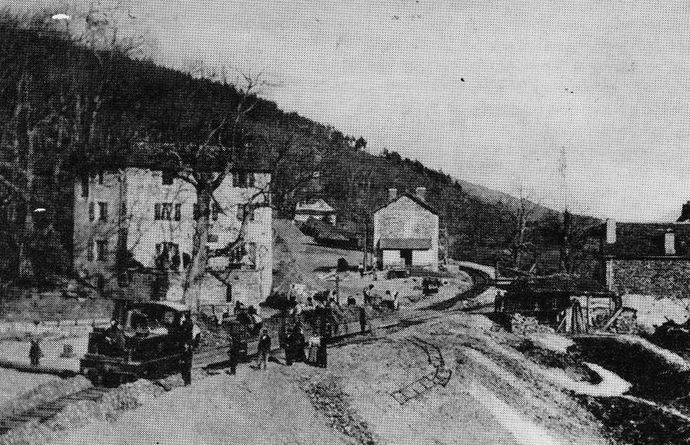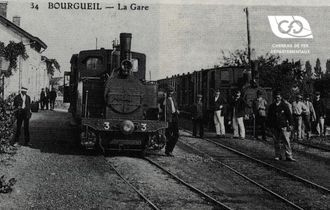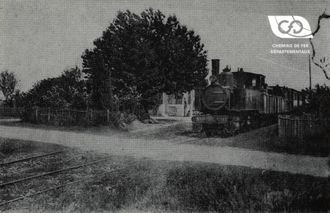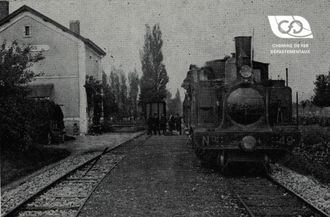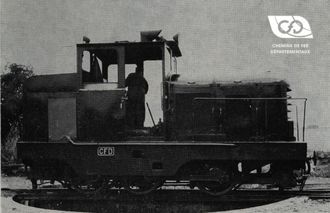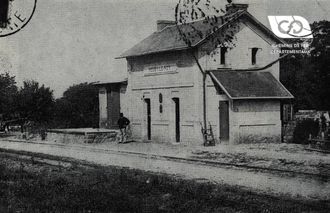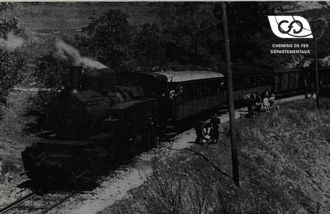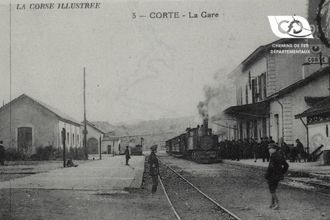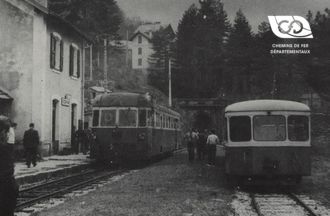In view of the urgency of the needs, the Management had approached various manufacturers Only Pinguely had responded to this request by offering three units of its type 107, which were on standby and whose buyer was not yet in a position to take delivery. These machines, which corresponded in detail to the specifications of the C.F.D., were immediately purchased and sent to the Cheylard depot.
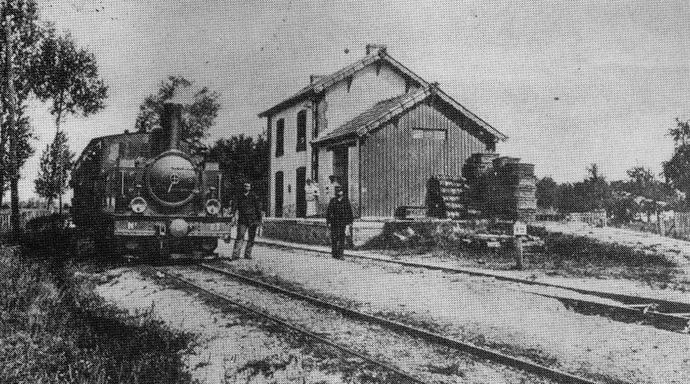
Description of the locomotive type Indre
They had a boiler whose cylindrical body was composed of 3 ferrules. The steam intake dome located on the first shell supported the safety valves under load. The sandpit was located on the second shell. The distribution was of the Walschaert type. The power take-off located on the third axle and its wheelbase of 2,050 m made it a machine of a fair stability.
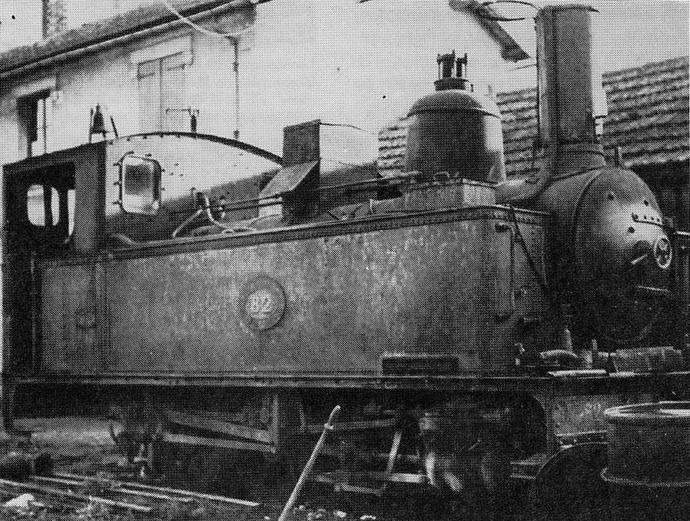
Their performance was nevertheless much better than that of the 4-5 series due to the greater length of the tube bundle, giving them a greater vaporization and the larger size of the cylinders, thus significantly increasing their tractive effort, despite a slightly larger diameter of the driving wheels, reaching 0.900 m.
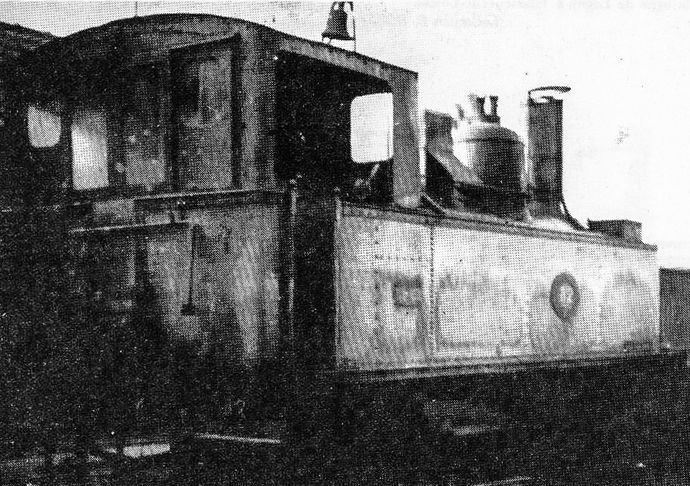
During the tests, they towed a 50-ton convoy on a 30°/°°° ramp at a speed of 15 km/hour.
They were painted in olive green with red threads and were numbered 3 to 5 on delivery. They circulated under these numbers during the construction period, then were fitted with oval brass plates bearing the n° 81 to 83 and the Company's designation, as soon as they were used for the needs of the farm. The front and rear crossmembers were painted in vermilion red and were marked "N°" on the left and the registration on the right of the central stamp in white characters.
These markings underwent several modifications during the various lifts:
- The markings on the front and rear cross members were changed as follows:
- 81 was marked C. F.D. instead of the inscription "N°" in 1930.
- The 82 bore its registration on either side of the central stamp at the same time.
The latter, on the occasion of its re-painting at Le Cheylard in 1930, received a smoke box door painted red and the circular boiler frame was tinted white. This test, which was not generalized, was intended to obtain a better distant vision of the convoys for the crews working on the track as well as for the road users in the vicinity of the P.N.
